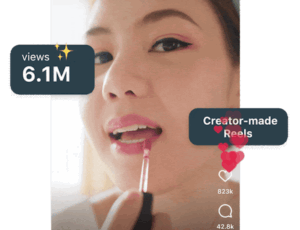 When Amazon debuted its Video Direct service on Tuesday, the media hailed it as a rival to YouTube.
When Amazon debuted its Video Direct service on Tuesday, the media hailed it as a rival to YouTube.
Video Direct lets content creators post and monetize video directly on Amazon’s Video and Prime platforms. Amazon isn’t commenting beyond the release, but there’s no standalone platform and the only launch partners are media publishers, film studios and instructional video companies. (Launch partners either declined to comment or provided boilerplate statements.)
While advertisers see long-term potential, the product is so nascent they have little sense of how it will be applied.
“I can see a lot of really cool applications, and it seems like a good move for Amazon,” said Rob Griffin, chief innovation officer at the digital agency Almighty. “It’s something we’re going to be looking into and having conversations with Amazon about how it might work for our clients.”
Matt Naeger, senior VP of client partners at Merkle, said the performance agency is also evaluating the Video Direct offers on behalf of clients.
He noted that Amazon’s current video ad products are limited to five- to 30-second spots rolling between certain Amazon Video content, and require more rigorous approval and processing from Amazon than either Facebook or YouTube. And Naeger is not sure if Video Direct’s ad-buying process will affect the rest of the video ads available on Amazon.
What is known about Video Direct is that it features four different monetization and distribution options: offering the content free in return for $0.15 an hour per US viewer (and $0.06 an hour for international audiences) with other incentives for high-performing video creators; as a part of Amazon Prime’s subscription content; as a subscription add-on through Amazon’s Streaming Partner Program; or as a one-off rental or purchase (with Amazon taking a 45% cut of the sale).
But Amazon doesn’t mind having a convoluted platform for marketers and media companies as long as its user base sees a seamless service, said Colin Brown, chief media officer at the programmatic buying firm Anagram.
“For us, there isn’t really a direct connection between Amazon Prime and the media side and the shopper marketplace,” said Brown, which is why advertisers can’t track audiences across Amazon’s different platforms – though they can pay Amazon to do the work for them behind a curtain.
“From the advertiser side, they haven’t really stitched the platforms together,” echoed Merkle’s Naeger. “I’d love it if they did, but I’m honestly not sure it’s even a barrier Amazon has to solve for.”
Still, it’s unclear if Amazon needs to replicate the ad money that Facebook and Google make, since advertising isn’t its core business, Naeger said.
“All the data and measurement Amazon can absorb from the advertising,” he said, “can be driven back into the shopper side in the form of lower and lower margins they can leverage [against other ecommerce markets and retailers], or as a value add to any marketer they want to work with for content. That’s the huge advantage of being Amazon.”
So the advertising value of Video Direct might not be in the inventory it provides, but in the fact that it’s an additional measurement touch point within Amazon.
“Think about how much more TV and video advertising is moving directly into content,” said Brown. With Video Direct, Amazon is better positioned to connect those product placement deals to sales.













